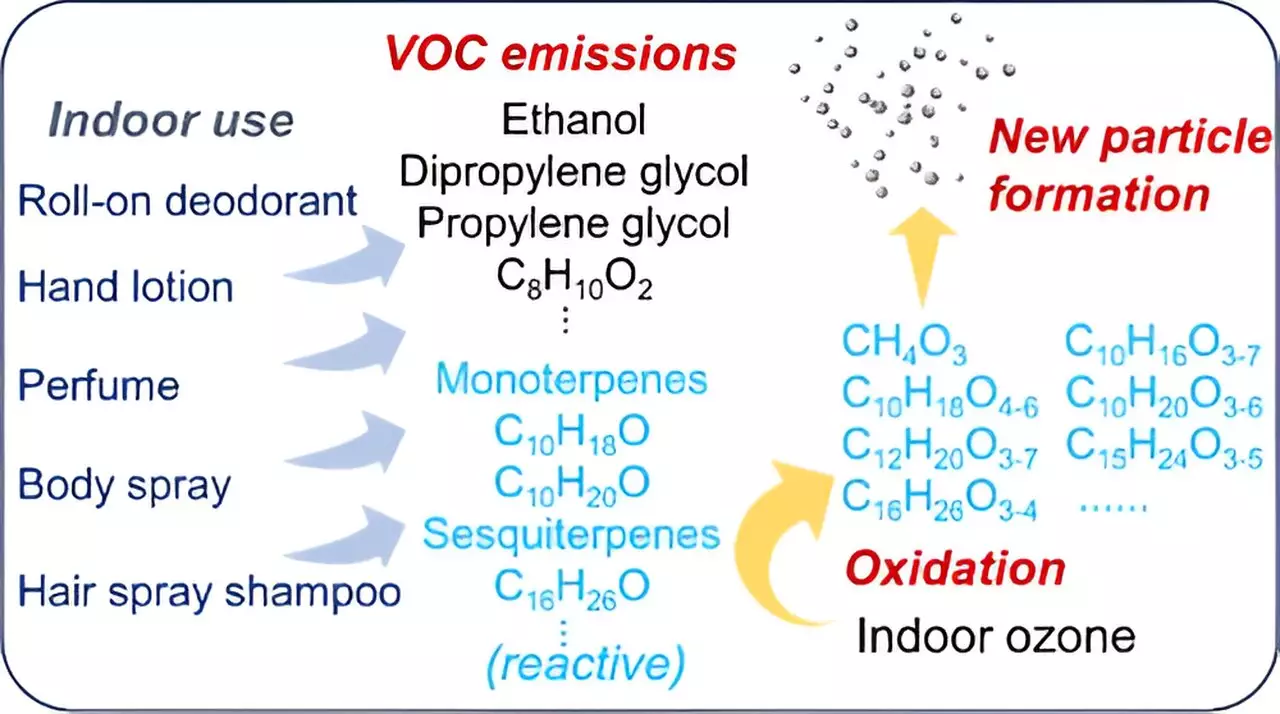The everyday personal care items we often take for granted may have a more significant impact on our health than we realize. Recent research from the École Polytechnique Fédérale de Lausanne (EPFL) unveils the concerning reality that these products release a plethora of volatile organic compounds (VOCs) into our indoor environments. With an alarming release of over 200 different VOCs, this cocktail of chemicals raises pressing questions regarding the quality of the air we breathe indoors. The implications of these findings could alter how we perceive the safety of common personal care products, from deodorants to lotions.
The research was spearheaded by Dusan Licina and his team at EPFL’s Human-Oriented Built Environment Lab, primarily focusing on understanding the air quality complications arising from personal care product usage. The study began with a typical shopping list that included commonly used items like roll-on deodorants, spray hair products, and hand lotions. To study their impact accurately, the researchers created an experimental environment using unique environmental chambers designed to replicate real indoor settings, facilitating precise monitoring of air quality.
In their investigation, the team conducted a series of tests, first evaluating the emissions of VOCs without any external influences, and subsequently introducing ozone, which represents a common atmospheric gas that infiltrates our homes, especially in warmer months. This two-pronged approach enabled researchers to measure both standard emissions and those influenced by ozone, simulating a realistic indoor atmosphere.
The results of the study were revealing and disturbing. When used indoors, personal care products emitted over 200 VOCs, with ethanol and monoterpenes being the primary culprits. However, upon introducing ozone into the chambers, researchers observed the formation of additional compounds and particles, especially from sprays and perfumes. This chemical interaction led to levels of VOC emissions that surpassed pollution levels typically found in major urban centers.
Licina highlighted a significant concern: the emergence of new particles that are capable of penetrating deep into the lungs. The “nucleation” process suggests that certain molecules can cluster together, forming even larger ultrafine particles, possibly exacerbating the risks associated with respiratory health. The fact that we apply these products so close to our breathing zones raises the alarm about potential health ramifications that remain poorly understood.
Addressing the significant impact of personal care products on indoor air quality requires a multifaceted approach. The research advocates for enhanced ventilation strategies, particularly during the application of these products, to mitigate VOC concentrations. Installing air purification systems comprising activated carbon filters and other filtration technologies may help reduce the unhealthy accumulation of chemicals indoors.
Moreover, limiting the initial concentration of ozone in indoor spaces can further reduce the risk of adverse chemical reactions that lead to harmful pollutants. Another critical recommendation is for consumers to reconsider their use of conventional personal care products. Opting for more natural alternatives or reducing reliance on synthetic options could lead to healthier indoor environments. While this transition may be challenging, it is essential for the well-being of individuals and families in their homes.
As this research illuminates the intricate relationship between our personal care habits and indoor air quality, it underscores the urgency of reevaluating the products we use. With air quality being a crucial component of our overall health, understanding the implications of VOC emissions and their health effects becomes more pertinent than ever. A shift toward safer alternatives and improved indoor environmental strategies is not just beneficial but necessary for ensuring a healthier future for ourselves and the generations to come.


Leave a Reply